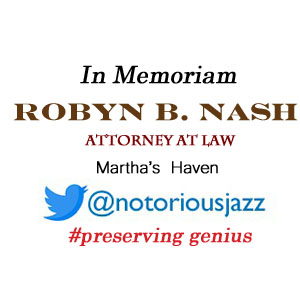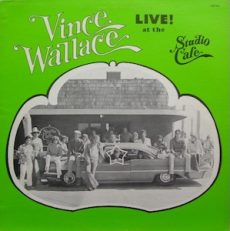
Daily Dose Of Jazz…
Vince Wallace was born on June 15, 1939 in Port Townsend, Washington. At just two months shy of his second birthday his mother moved him to San Joaquin Valley, California. After spending a little time there, they ended up settling and growing up in the Bay area of Oakland, California.
His earliest recordings were on the Black Jack Wayne label in 1953 with Screamin Mel Dorsey and Chuck Wayne and the Heartbeats. These sessions were along with his original instrumental, Funky. He performed regularly at this time at the Country and Western halls and go go bars of Niles, California alongside Rose Maddox, Johnny Cash, and the Black Brothers.
As he developed, he became more sought after at all hours jazz joints where he sat in with Eric Dolphy, Paul Chambers, Charles Mingus, Pony Poindexter, Art Blakey and Smiley Winters. Jimbo’s Bop City in San Francisco was the best place around, where every night after 2 a.m. another legend of the jazz would come through the door.
In 1958 Vince moved to Southern California where he picked up work with Paul Bley and Marvin Rainwater. His Sunday jam session at The Cascades Club in Belmont Shores, helped the emergence of Kent Glenn, Mark Proctor, Gene Stone, and Warren Gale. By 1966 was back in the Bay Area working with alto saxophonist Norman Williams at the JukeBox in San Francisco. Through 1970 Wallace recorded three albums with Little John, a fusion rock band on Epic records.
Drawn back to southern California he experienced some of his widest recognition as his featured performances were reviewed favorably by Gerald Wilson.. This led to an eventual run at the Studio Cafe, and the release of two of Vince’s solo albums on Amp Records. Returning to San Francisco he led a Sunday night jam session through the Nineties, receiving the San Francisco Bay Guardian Award for Best Jam Session in 1995.
With a surge of interest in his music in the new millenium, he started working at the Bulldog Coffee Shop in Oakland and reuniting with Bishop Norman Williams, Prince Lasha, Jim Grantham, Steve Heckman, Fred Randolph, Chuck Thomposon, Chris Amberger, Terry Rodriguez, and John Gilmore, just to name a few. He began working on his memoirs, created a website, took a Friday residency at Cafe Van Kleef, appeared on KCSM 91.1 FM, and recorded a new album with Larry Vuckovich.
Tenor saxophonist Vince Wallace has reestablished himself as one of the most sought after saxophonists around and his music will undoubtably be spread throughout the world via his website www.vincewallace.com.
More Posts: bandleader,history,instrumental,jazz,music,saxophone
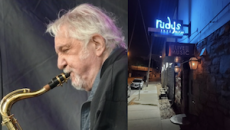
The Jazz Voyager
On the way east to Music City USA to check out an authentic jazz experience standing out as a beacon in the city that boasts country music. Rudy’s Jazz Room embodies the history and spirit of traditional jazz clubs, where musicians played their hearts out while people gathered to listen, dance, eat, drink and socialize in a swingin’ atmosphere. The venue raises Nashville to the level of other great jazz cities like New York, New Orleans, Chicago, Kansas City and many more.
Hitting the stage this evening is saxophonist Don Aliquo who Presents Bebop Live and explores the various elements, depths and history of bebop jazz. In the early 1940’s when the younger generation of jazz musicians expanded the creative possibilities of jazz and bebop music first hit the jazz scene it wasn’t everyone’s cup of tea.
Tickets: $14.00
Rudy’s Jazz Room is located at 809 Gleaves Street, Nashville, TN 37203. For more information contact the venue at rudysjazzroom.com.
More Posts: adventure,club,composer,genius,jazz,museum,music,preserving,saxophone,travel
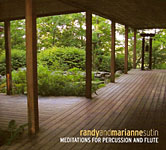
Daily Dose Of Jazz…
Randy Sutin was born on May 14, 1958 in Great Falls, Montana where he studied piano starting at age four and guitar when he turned eight. By the time he was ten he began study of the drums. He began playing mostly rock and some country professionally with local groups at age thirteen. At 20, he began to study mallet percussion, in particular the vibraphone, which became the main staple of his professional life as a musician.
In 1985, Randy relocated to Trenton, New Jersey, then to the Philadelphia, Pennsylvania area four years later. He was a regular member of the Bill Hollis Quartet and soon began working regularly and recording with the Barry Sames Jazz Ensemble. A regular member of the late pianist Eddie Green’s group, he was featured on Eddie’s last recording, Shades of Green. He has also played and recorded with Walter Bell and the Latin Jazz Unit.
Over the last fifteen years, Sutin has continued playing as a regular member of the Barry Sames Jazz Ensemble, which does jazz arrangements of Christian music. He is featured as a soloist on both of Barry Sames’ recordings, Awaiting the Spirit and Celebration. This association with playing jazz for spiritual purposes and a desire to do a project with his wife, Marianne, who is an experienced yogi, led to his latest musical endeavor.
In 2007 they released Meditations for Percussion and Flute, a suite of compositions based on yoga practice blending a mixture of styles, but always falling back to jazz as its core. Together they created their record label, Balanced American Music. Recent work has focused on The Birdhouse Project, a trio with Jim Miller and Tyrone Brown, performing the compositions of Charlie Parker.
His most current project is with The Tyrone Brown String Ensemble. Randy is featured on both of their 2008 releases, The Magic Within and Moon of the Falling Leaves.
Vibraphonist Randy Sutin, who also plays marimba, continues to perform and record.
More Posts: bandleader,history,instrumental,jazz,music,vibraphone
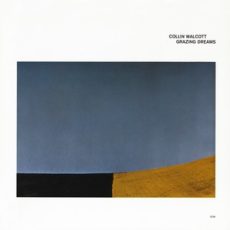
Daily Dose Of Jazz…
Collin Walcott was born on April 24, 1945 in New York City, New York. He studied violin and tympani in his youth, and studied percussion at Indiana University School of Music. After graduating in 1966, he went to the University of California, Los Angeles, and studied sitar under Ravi Shankar and tabla under Alla Rakha.
Walcott moved to New York and blended bop and oriental music with Tony Scott in 1967–69. Around 1970 he joined the Paul Winter Consort and co-founded the band Oregon. These groups, along with the trio Codona, which was founded in 1978, combined jazz improvisation and instrumentation with elements of a wide range of classical and ethnic music.
He played with Miles Davis on his 1972 album On the Corner, had three releases under his own name on ECM Records. He taught at the Naropa Institute in Boulder, Colorado.
Sitar and tabla player Collin Walcott was killed in a bus crash in Magdeburg, East Germany on November 8, 1984 while on a tour with Oregon.
More Posts: bandleader,educator,history,instrumental,jazz,music,sitar,tabla
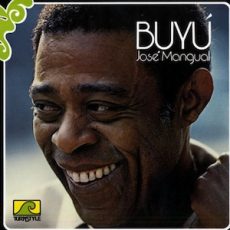
Daily Dose Of Jazz…
Jose Mangual Sr. was born on March 18, 1924 in Juana Diaz, Puerto Rico. He began playing percussion at the age of ten and by 1938 moved to New York at the age of 14. In 1952 he began playing timbales and percussion for Machito’s Orchestra.
In the 1950s Mangual played with the godfather of modern-day salsa Arsenio Rodriguez and with Latin jazz pioneer Cal Tjader. Then he joined Erroll Gardner’s band with whom he traveled the world, playing jazz for international audiences. During this time he performed and recorded with Cannonball Adderley, Sarah Vaughn, Herbie Mann. and appeared on Count Basie’s April in Paris, Miles Davis’ Sketches of Spain, Dizzy Gillespie’s Talkin’ Verve, Tito Puente’s Babarabatiri, Willie Bobo’s Spanish Grease, Gato Barbieri’s Viva Emiliano Zapata, as well as on multiple Charlie Parker’s compilations.
He has also performed with Dexter Gordon, Carmen McRae, Jorge Dalto, Stan Getz, Louis Jordan, Ray Charles, Tito Rodriguez, Xavier Cugat, Tito Puente and Chano Pozo.
In the 1970s, Mangual recorded two instructional albums Buyú and José Mangual* & Carlos “Patato” Valdez* – Understanding Latin Rhythms Vol. 1 with Carlos “Patato” Valdez for the drum maker Latin Percussion.
In 1986 he co-wrote and recorded Los Mangual – Una Dinastia with his sons Jose, Jr. and Luis Mangual. In 2001 he was posthumously inducted into the International Latin Music Hall of Fame.
Percussionist Jose Mangual Sr., world renowned for his bongo drum performances and recordings during the 1940s and 1950s, died on September 4, 1998 in New York City.
More Posts: bongos,history,instrumental,jazz,music,percussion





